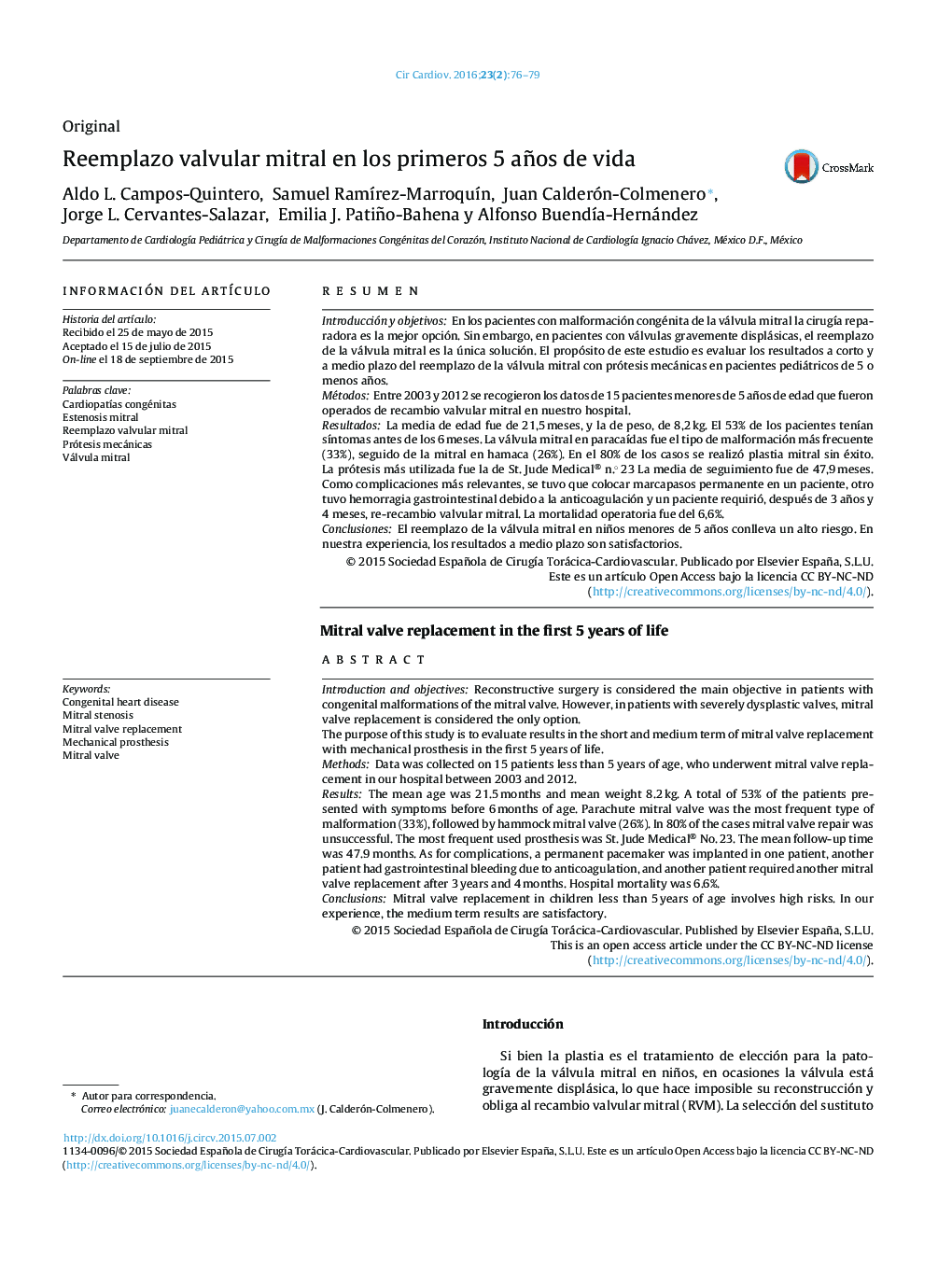| Article ID | Journal | Published Year | Pages | File Type |
|---|---|---|---|---|
| 2907535 | Cirugía Cardiovascular | 2016 | 4 Pages |
ResumenIntroducción y objetivosEn los pacientes con malformación congénita de la válvula mitral la cirugía reparadora es la mejor opción. Sin embargo, en pacientes con válvulas gravemente displásicas, el reemplazo de la válvula mitral es la única solución. El propósito de este estudio es evaluar los resultados a corto y a medio plazo del reemplazo de la válvula mitral con prótesis mecánicas en pacientes pediátricos de 5 o menos años.MétodosEntre 2003 y 2012 se recogieron los datos de 15 pacientes menores de 5 años de edad que fueron operados de recambio valvular mitral en nuestro hospital.ResultadosLa media de edad fue de 21,5 meses, y la de peso, de 8,2 kg. El 53% de los pacientes tenían síntomas antes de los 6 meses. La válvula mitral en paracaídas fue el tipo de malformación más frecuente (33%), seguido de la mitral en hamaca (26%). En el 80% de los casos se realizó plastia mitral sin éxito. La prótesis más utilizada fue la de St. Jude Medical® n.° 23 La media de seguimiento fue de 47,9 meses. Como complicaciones más relevantes, se tuvo que colocar marcapasos permanente en un paciente, otro tuvo hemorragia gastrointestinal debido a la anticoagulación y un paciente requirió, después de 3 años y 4 meses, re-recambio valvular mitral. La mortalidad operatoria fue del 6,6%.ConclusionesEl reemplazo de la válvula mitral en niños menores de 5 años conlleva un alto riesgo. En nuestra experiencia, los resultados a medio plazo son satisfactorios.
Introduction and objectivesReconstructive surgery is considered the main objective in patients with congenital malformations of the mitral valve. However, in patients with severely dysplastic valves, mitral valve replacement is considered the only option.The purpose of this study is to evaluate results in the short and medium term of mitral valve replacement with mechanical prosthesis in the first 5 years of life.MethodsData was collected on 15 patients less than 5 years of age, who underwent mitral valve replacement in our hospital between 2003 and 2012.ResultsThe mean age was 21.5 months and mean weight 8.2 kg. A total of 53% of the patients presented with symptoms before 6 months of age. Parachute mitral valve was the most frequent type of malformation (33%), followed by hammock mitral valve (26%). In 80% of the cases mitral valve repair was unsuccessful. The most frequent used prosthesis was St. Jude Medical® No. 23. The mean follow-up time was 47.9 months. As for complications, a permanent pacemaker was implanted in one patient, another patient had gastrointestinal bleeding due to anticoagulation, and another patient required another mitral valve replacement after 3 years and 4 months. Hospital mortality was 6.6%.ConclusionsMitral valve replacement in children less than 5 years of age involves high risks. In our experience, the medium term results are satisfactory.
